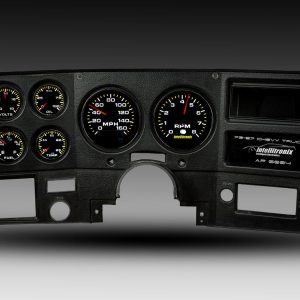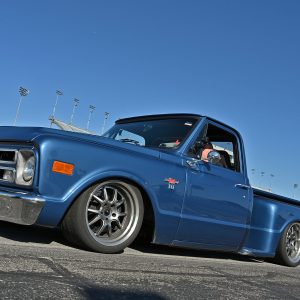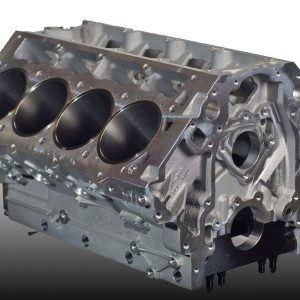Drag Race

Here’s the deal: if you’re driving a performance car, the last thing you want is factory lag holding you back. You bought it for the thrill, the punch, that raw acceleration that gives you instant gratification. But if you’re tired of stock throttle response getting in the way, The Auto Builder has the answer. We recommend Soler Performance’s DLX Bluetooth Throttle Controller. Your first drive will be mind blowing — it transforms your car into a responsive rocket.

As in other levels of Motorsports, drag racing has provided us with a rich and interesting history filled with incredible accomplishments by both man and machine. Many of these achievements are the result of tenacity and perseverance. One such story centers around a man known by competitors and fans as the first “Mr. Chevrolet.”

His name is synonymous with what many believe were the golden days of drag racing. This was a time when factories were devising new engines, and some of the best minds in racing explored new and clever ways of applying these new developments to the dragstrip. The mid-’60s were truly revolutionary times in drag racing, and one of the most feared competitors at the time was “Dyno” Don Nicholson. Always the innovator, Nicholson was all about the details, poring over all aspects of his cars until everything was sorted out.

One of the many things The Auto Builder does on a daily basis is keep its eyes peeled for small make-a-difference items, tech and how-tos that might benefit you for both street and/or strip application. Sometimes those elements are major, other times they are far less significant, but nonetheless helpful. We also pay particular attention to things that are of interest, up to and including the reasons why an owner did not win at a car show. There are 55 photos here, each with a bit of info. Many may pay dividends for you sometime in the future, so sit back, learn, laugh and enjoy.

Back in 1965, the Chrysler Corporation took Super Stock drag racing very seriously. It was heavily involved in National Hot Rod Association (NHRA) competition and to a lesser extent with other, smaller drag racing sanctioning bodies. It could be said that, without question, if you were at a dragstrip in America on any given Sunday during this time, there were plenty of winning Mopars blasting down the 1,320-foot racetrack.

“Rust can put fear into the hearts of many hot rodders, but with enough work, nearly anything can be repaired.“

The Time-Worn Look Is More Popular Than Ever Author Defining Patina in Street Rods Patina is defined as “a pleasing surface sheen on something that develops with age or frequent handling.” When that definition is applied to street rods, a patina rod can take on any number of variations. The exterior can be close to original, with age showing through the painted surface in the form of primer. Sometimes the faint appearance of rust can also classify a rod as having patina, provided the rust has not taken over the entire car. Many times these patina rods are built from those treasured “barn finds” that seem to be discovered by undaunted rodders scouring the country searching for the Holy Grail of hot rods. The Art and Trend of Patina One of the modern trends of the street rodding hobby has been to create that cherished patina look. The art of patina can be tricky. We have seen patina rods crafted in such a fashion that the naked eye cannot tell the difference between real and invented, the real old and the fabricated old. The Appeal of Patina Rods As with all aspects of rodding, each of us has a different definition of what makes a patina rod. There does seem to be one theme that runs through each variation, though: the owners have a lot of fun with their cars. For some, it is a chance to get back to the basics. For others, it is a chance to reverse the high-end trophy-hound trend.

Traditional hot rods are all the rage, and while it’s a great experience to run across a true barn-find hot rod, some folks would rather make their own with the perfect blend of colors, textures and just the right amount of sanding. It’s definitely a way to grab attention, as these so-called beaters steal the show from some of the finest rods around, but there’s no doubt lots of time and money is spent to obtain this look.

There are many ways to finish the bottom of any car. Whether you are building new, from the ground up or even detailing a rebuild that is not the off-the-frame type, you have options. And regardless of the extent of the refurbishing, you could even leave the underside in some shade of primer as it is easy to touch up, and the fenderwells and underside often become marked with use.

When news of the Show Car Buildoff began circulating, the team at DuPont Hot Hues saw it as an excellent opportunity to not only become involved, but also to provide a sound platform to help all of us better understand what is involved in painting a car. The color selection is a process in and of itself, but having a better understanding of the characteristics of the materials used, how to use them and what is involved in using them is helpful as well.












